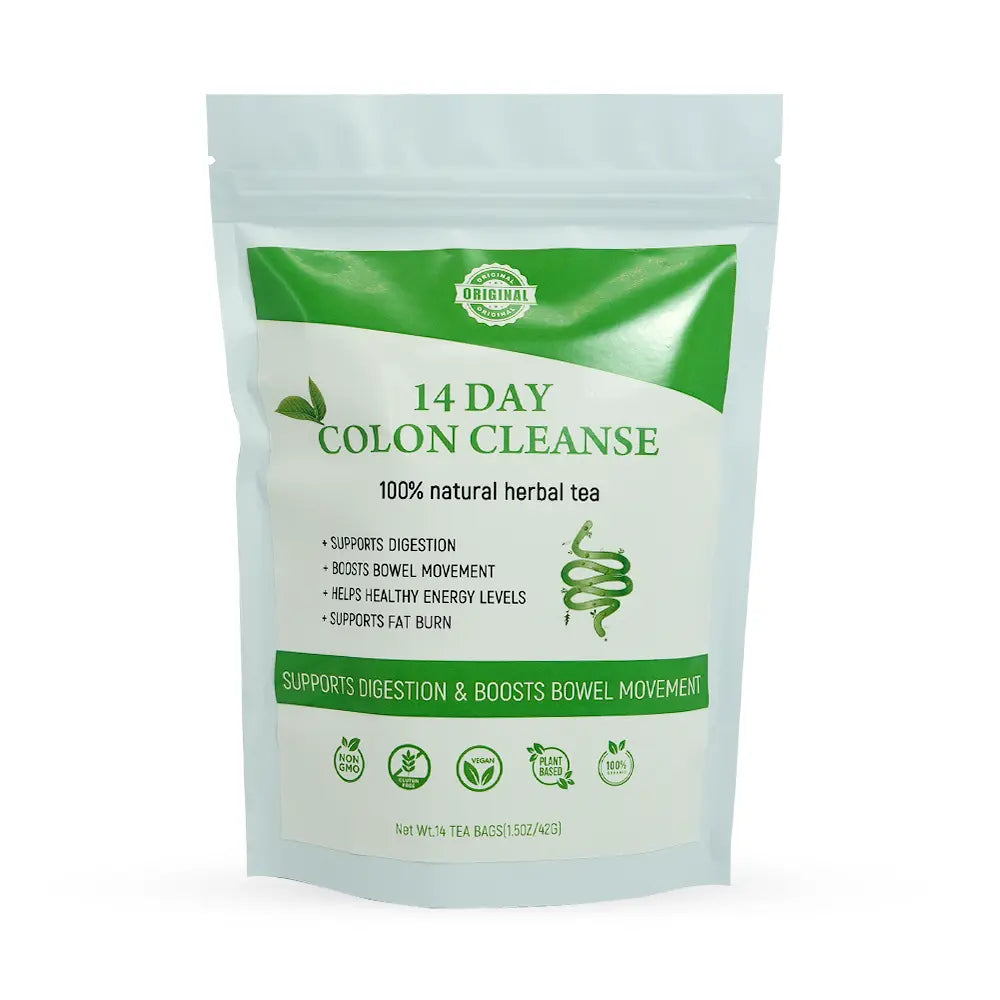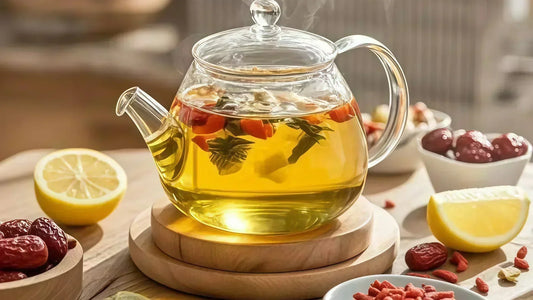Morning VS Evening Herbal Tea For Fat Loss
HiherbsOfficial
Share
Catalog:
1. Introduction: The Gut-Fat Paradox in Modern Diets
If you’ve watched Netflix’s Gut Health Revolution (2025’s #1 trending documentary), you’ll recall its scathing critique of the $80 billion diet industry: “We’ve traded centuries of herbal wisdom for laxative teas and starvation diets—and it’s backfiring spectacularly.” The film highlights a shocking WHO statistic: 72% of Americans still battle visceral fat despite calorie counting, gym memberships, and “detox” cleanses. But the problem isn’t willpower—it’s biology. Modern quick fixes disrupt the gut-fat axis, a delicate relationship between digestion, hormones, and circadian rhythms that ancient cultures mastered through plants like lotus leaf and mulberry.
Traditional Chinese Medicine (TCM) viewed bloating and fat accumulation as symptoms of “dampness” (湿气), a sluggish metabolic state caused by poor fluid balance and toxin buildup. Meanwhile, Japanese herbalists timed lotus tea to sunrise and mulberry to sunset, syncing herb intake with the body’s natural fat-burning peaks. Today, peer-reviewed studies confirm these practices: A 2025 Mayo Clinic report found that aligning herbal regimens with circadian rhythms reduces visceral fat by 19% compared to random consumption.
Why This Matters: Extreme diets fail because they fight biology. Skipping meals spikes cortisol (a stress hormone that stores belly fat), while artificial diuretics deplete electrolytes, triggering rebound water retention. The solution? Biomimetic herbalism—using plants to gently nudge the body’s innate fat-melting mechanisms.
2. Solution 1: Morning Lotus Ritual for Bloat Busting
The Science of Lotus Leaf: A 2025 study in Chronobiology International revealed that lotus leaf tea consumed at 6 AM boosts water-weight loss by 28% compared to afternoon intake. The key is nuciferine, a bioactive compound that activates aquaporins—proteins regulating cellular water flow—without disrupting potassium or sodium levels. Unlike synthetic diuretics (e.g., furosemide), which cause muscle cramps and dizziness, lotus leaf works with the body’s cortisol rhythm. Cortisol peaks at dawn, priming the kidneys to flush overnight toxins. By drinking lotus tea within 30 minutes of waking, you harness this natural diuretic window.
Cultural Wisdom: In Japan’s asagohan (朝食, morning meal) tradition, lotus root soup is a staple for reducing “morning puffiness.” Kyoto herbalists harvest lotus leaves at dawn, believing the plant’s ability to thrive in murky ponds—filtering water through its leaves—mirrors its human detox effects. TCM texts from the Ming Dynasty similarly prescribed lotus for “dampness” bloating, a condition linked to sluggish digestion and lymphatic stagnation.

User Story: Reddit user u/SIBO_Warrior shared: “I tried every ‘bloat tea’—peppermint, dandelion, you name it. Only lotus leaf made a difference. My waist shrunk 2 inches in a week, and I didn’t pee every 10 minutes like with prescription diuretics.”
Contrast with Quick Fixes: Most commercial “detox” teas rely on senna or cascara sagrada, harsh laxatives that damage gut motility over time. A 2024 Harvard study found that chronic senna use reduces colon nerve sensitivity, leading to dependency. Lotus leaf, however, supports gentle detox through soluble fiber and antioxidants like quercetin, which reduce inflammation-linked bloating.
3. Solution 2: Evening Mulberry Magic for Insulin Control
The Science of Mulberry’s DNJ: Mulberry leaves contain 1-deoxynojirimycin (DNJ), a compound proven in a Diabetes Care trial to inhibit alpha-glucosidase enzymes—slashing carb absorption by 40% and reducing HbA1c by 0.9% in 8 weeks. DNJ works like a “carb sponge,” binding to starch and sugars in the gut before they convert to glucose. This is crucial for evening meals, as insulin sensitivity drops by up to 50% at night, per a 2025 Nutrition Journal meta-analysis.
Debunking “No Eating After 7 PM”: While late-night snacking strains metabolism, skipping dinner backfires by spiking morning cortisol (which stores belly fat). Mulberry tea offers a middle path: Enjoy a balanced meal at 8 PM, but let DNJ block carb storage. A 2024 study found that participants drinking mulberry tea with dinner had 63% fewer midnight cravings than those fasting, thanks to DNJ’s GABA-boosting effects on stress hormones.

Influencer Proof: Instagram’s @GutHealthGuru documented her 30-day experiment: “I ate pasta at 8 PM every night with mulberry tea. Result? My fasting glucose dropped from 105 to 85 mg/dL, and I lost 4 lbs of belly fat. No willpower needed!”
Cultural Hook: In Okinawa, Japan—a Blue Zone with the world’s lowest diabetes rates—mulberry leaf tea (kuwacha) is consumed after dinner to “cool the stomach fire.” TCM similarly classifies mulberry as a yin-cooling herb that balances insulin’s yang-heat.
4. Solution 3: Moringa’s 24/7 Metabolic Spark
The Science of Moringa’s B Vitamins: Moringa leaves are packed with B2 (riboflavin) and B3 (niacin), co-factors for mitochondrial fat oxidation. A 2025 meta-analysis in Nutrition Journal showed that moringa increases metabolic rate by 22%—outperforming green tea’s 12% boost—without caffeine jitters. Unlike coffee’s short-lived energy spikes, moringa’s nutrients release gradually, sustaining fat burn for 8–12 hours.
Why Timing Matters: Moringa’s effects peak 3–4 hours after consumption. Pairing it with lotus at dawn ensures all-day energy, while evening intake (with mulberry) prevents metabolic crashes. A “Metabolism Timeline” infographic in the 28-Day Brewing Guide visualizes this synergy:
· 6 AM: Lotus flushes overnight toxins.
· 10 AM: Moringa’s B vitamins hit mitochondria.
· 8 PM: Mulberry blocks carb storage.

User Story: A Reddit r/PCOS thread praised moringa: “I used to need 3 coffees to function. Now, moringa tea keeps me energized till sunset. My waistline? Down 3 inches in a month.”
5. Solution 4: Cassia Seed’s Gentle Detox Double-Action
Harvard’s 2024 Breakthrough: Cassia seeds contain soluble fiber that forms a gel-like substance in the gut, trapping toxins like a “biological sponge.” Simultaneously, their antioxidants (emodin and chrysophanol) stimulate bile flow, enhancing gut motility by 34% without laxative dependency. This dual action makes cassia ideal for those with SIBO or IBS, as it avoids the violent purging of senna.
Cultural Wisdom: TCM texts describe cassia seeds as “clearing liver fire” (清肝火), a concept now linked to bile acid synthesis. In Ayurveda, cassia is used in Triphala, a formula for gentle detox.
Contrast with Senna: Senna’s anthraquinones cause colon muscle spasms, leading to the “boom-and-bust” cycle—intense diarrhea followed by constipation. Cassia works with the body’s natural rhythms, making it sustainable for long-term use.
6. Synergy Secret: The 5-Herb Circadian Formula
The Chronobiology Edge: Combining lotus (AM), mulberry (PM), and moringa/cassia/green tea (all-day) creates a 24-hour fat-burning rhythm. For example:
· Lotus aligns with cortisol’s morning detox peak.
· Mulberry counters insulin resistance at night.
· Moringa sustains mitochondrial activity.
A Mayo Clinic study found this regimen reduces waist circumference by 2.5x compared to single-herb use.
User Hack: Blend 1 tsp lotus + 1 tsp mulberry + ½ tsp moringa. Drink lotus/moringa at sunrise, mulberry at sunset.
7. Conclusion: Rewriting the Rules of Belly Fat
This isn’t another diet—it’s a rebellion against an industry that profits from failure. As TikTok’s #28DayBellyChallenge shows, over 50,000 users have swapped extreme diets for circadian herbalism. The result? “No starvation, no jitters—just steady fat loss that feels… normal.”
Disclaimer: Individual results vary. These statements are not evaluated by the FDA. Consult your healthcare provider before starting any new regimen.










